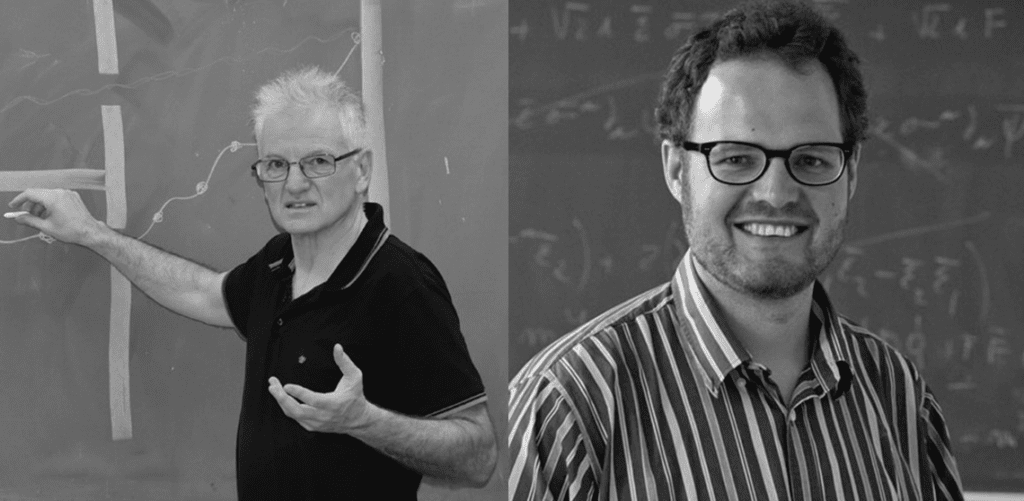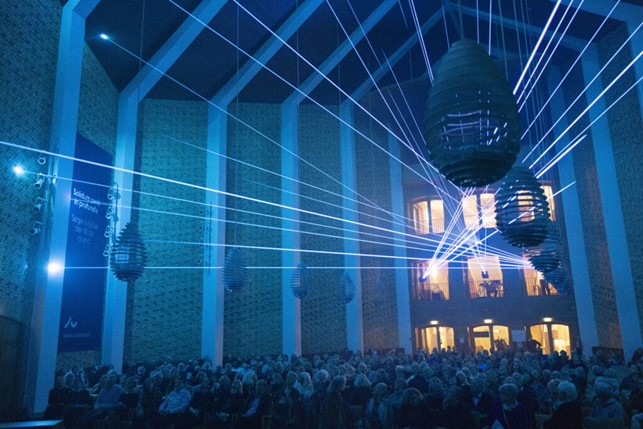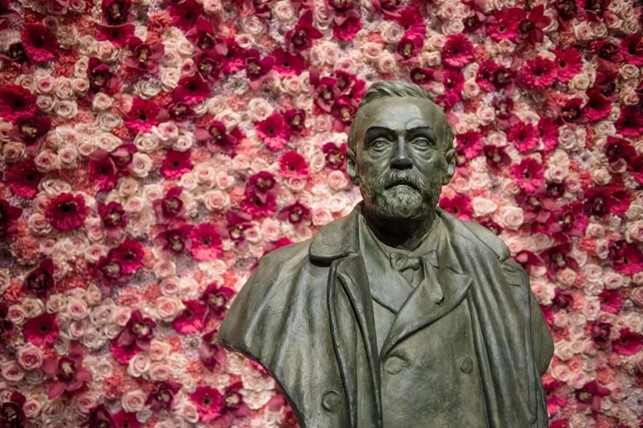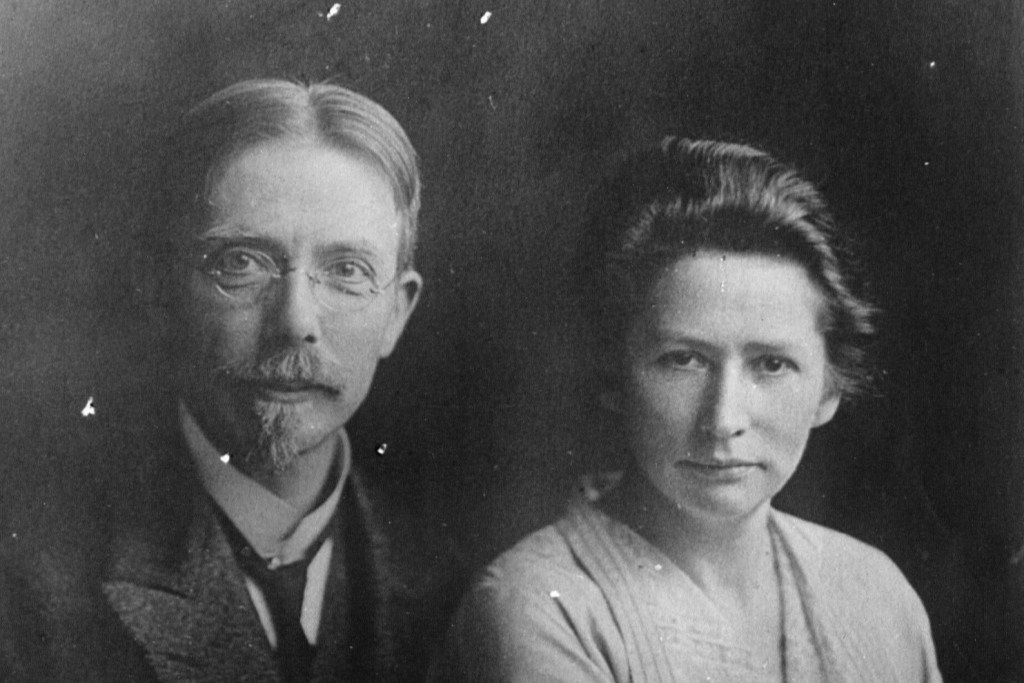Interview with Tomas Bohr and Emil Bjerrum-Bohr
Bohr’s building blocks: the physician’s success was based on collaboration and practical sense

Niels Bohr was the architect behind the world-famous Bohr model of the atom in 1913. But which components underpinned the scientist and his genius? We put that question to the physicist’s grandson Tomas Bohr and great-grandson Emil Bjerrum-Bohr when they gave a joint lecture at the Royal Academy on their common ancestor and source of inspiration to mark the annual Research Day (Forskningens Døgn).
By Rikke Reinholdt Petersen
This year it is exactly 100 years since Niels Bohr was awarded the Nobel Prize in Physics. The Royal Academy, of which he was not only a member, but also for several years its president, is taking an active part in celebrating the anniversary. That is why Niels Bohr was the main theme of this year’s Research Day event on April 29.
In addition to a Niels Bohr-inspired tour of the premises on H.C. Andersens Boulevard, three lectures centered around Bohr were on the program. One of them was held by Bohr’s own descendants, grandson Tomas Bohr and great-grandson Emil Bjerrum-Bohr, who talked about the scientist’s influence on their own outlook on life and scientific work. Both have followed in his footsteps as researchers – Tomas as a professor at the Department of Physics at The Technical University of Denmark, and Emil as an associate professor at the Niels Bohr Institute. And according to them, Bohr’s success was far from arbitrary – on the contrary, it was based on some crucial character traits.
A unifying force
– “His great ability to bring people together and stimulate them to do their best” – is one of the qualities that Tomas Bohr mentions first.
And here Emil agrees:
– “It is very important to recognize Niels Bohr’s contribution to the way we think about research collaboration, as in the ‘Copenhagen spirit’, which was essential both for Bohr personally and for the collaboration at the Niels Bohr Institute. Today, that spirit is a source of inspiration to many research environments around the world,” he explains.
Bohr’s interest in and talent for research collaboration was also clearly reflected in his work for The Royal Academy. Together with a small circle of other members, Niels Bohr was instrumental in paving the way for electing a large number of research colleagues as members of The Academy. Many of these were big international names such as Albert Einstein, Max Planck and not least The Academy’s first female member, Marie Curie – thereby drawing dots between them and the Danish research landscape. A research landscape that quickly became much more open, vibrant, and characterized by constructive exchange with people like Bohr at the helm.
In Emil Bjerrum-Bohr’s opinion, one of the most important lessons Niels Bohr left us with is the willingness to collaborate and the premise that “debating with others is a good thing”. And he also mentions the understanding that “problems can be viewed from many angles, and that the entirety of a problem may be complex”.
Bicycle mechanic and wordsmith
Due to the enormously abstract issues that Niels Bohr dealt with in his research, it is easy to imagine him as a person who was always on a higher intellectual plane. But like Bohr’s own motto that “opposites are complementary”, he was also made of a more complex material.
– “Something that surprised even me about Niels Bohr was his practical sense, which was also important in his work. He liked to take mechanical things apart and repair them, and I know for one thing that he repaired his aunt, Hanna Adler’s three-wheeled adult bicycle when it broke,” says Emil about his great-grandfather.
In fact, this lesser-known love of mundane tasks and simplicity in other contexts of life is something that Tomas Bohr has been inspired by in his own research. According to Tomas, being able to simplify his results as much as possible and at the same time make them as general as possible is a key to good research.
In addition to the surprising practical skills, an image emerges when the family talks about Bohr of a warm and friendly family man:
– “One of his favorite expressions, perhaps especially in connection with us at times silly grandchildren, was that we were ‘giggling gaga’,” recalls Tomas, who was able to enjoy his grandfather’s company for a good part of his childhood.
Like Niels Bohr, Tomas is a member of The Royal Academy. So was Tomas’ father, Aage Bohr, and great-grandfather, Christian Bohr – that is, Niels Bohr’s father. Emil Bjerrum-Bohr is a former member of The Young Academy, which is part of The Royal Academy.
Read more about their lecture and the rest of the program for The Research Day here.


